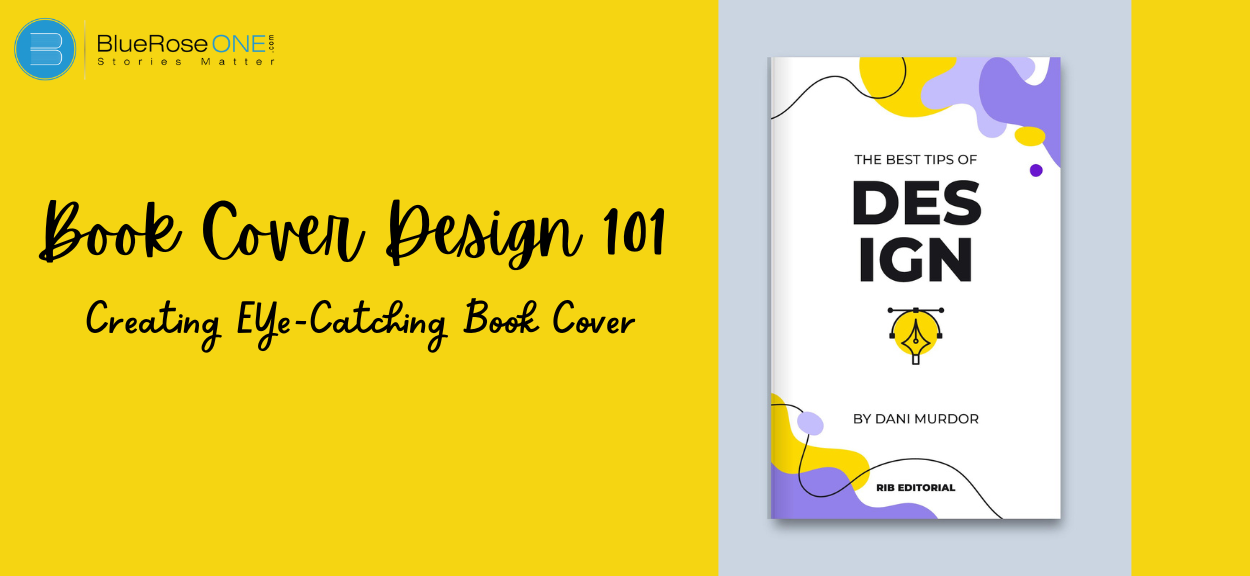Introduction
Understanding Your Audience
Elements of an Eye-Catching Book Cover
Typography: Choosing the right Fonts for Your Book Cover Design
Importance of Hight-Quality Images
Colors and their Psychological Effects
Layout and Composition of Book Cover Design
Branding Consistency
Testing and Iteration
Optimizing for Onnline Platforms
Case Studies of Successful Book Cover Design
DIY vs. Hiring a Professional Designer
Trends in Book Cover Design
Common Mistakes to Avoid to design a Sucessful Book Cover Design
Conclusion
Introduction
In the vast sea of books, a well-designed cover serves as a beacon, drawing readers towards the promise of a captivating story within. Book cover design is not merely about aesthetics; it’s a strategic endeavor aimed at capturing attention, enticing potential readers, and ultimately boosting sales. A compelling cover can make all the difference in a book’s success, making it imperative for authors and publishers to invest in this critical aspect of publishing.
Understanding Your Audience
Before diving into the design process, it’s essential to understand who your target audience is. Different genres appeal to different demographics, and tailoring your cover to resonate with your specific readership can significantly enhance its effectiveness. Analyzing market trends, reader preferences, and competitor covers can provide valuable insights into what works and what doesn’t in your genre.
Elements of an Eye-Catching Book Cover
A successful book cover comprises several key elements working in harmony to create a visually striking impression. The title and author name should be prominent, easily readable, and aligned with the genre and tone of the book. Engaging imagery and graphics play a crucial role in conveying the essence of the story and capturing the reader’s imagination. Additionally, the color scheme and typography contribute to the overall mood and appeal of the cover.
Typography: Choosing the Right Fonts for Your Book Cover Design
Typography plays a crucial role in conveying the tone and genre of a book. Selecting the right fonts can enhance readability and evoke the desired emotional response from readers. Serif fonts are often associated with traditional and formal genres, while sans-serif fonts convey a more modern and casual vibe. It’s essential to choose fonts that complement the overall design aesthetic and reflect the essence of the book.
You may also like: The Digital Libraries: Exploring the World of Reading Books
Importance of High-Quality Images
In the age of digital publishing, the quality of imagery on book covers is more critical than ever. Whether using professional photography, custom illustrations, or stock images, opting for high-quality visuals can elevate the perceived value of the book and attract more potential readers. Investing in original artwork or photography can also help create a unique and memorable cover that stands out in a crowded marketplace.
Colors and Their Psychological Effects
Colors have a profound impact on human psychology and can evoke specific emotions and associations. Understanding the symbolism of different colors can help authors and designers choose hues that resonate with their target audience and convey the desired mood or theme of the book. Whether aiming for warmth and positivity or mystery and intrigue, selecting the right color palette is essential for creating a compelling cover design.
Layout and Composition of Book Cover Design
The layout and composition of a book cover play a crucial role in guiding the viewer’s eye and creating visual interest. Achieving balance and hierarchy among various elements ensures that the cover is visually appealing and easy to navigate. Strategic placement of text, imagery, and other design elements can draw attention to key focal points and communicate the book’s central message effectively.
Branding Consistency
For authors with multiple books or an established brand identity, maintaining consistency across all their covers is essential. A cohesive visual style helps reinforce brand recognition and fosters trust and loyalty among readers. Whether through consistent typography, color schemes, or imagery, maintaining a unified brand aesthetic can enhance the overall professionalism and credibility of an author’s body of work.
Testing and Iteration
Creating the perfect book cover often requires multiple iterations and feedback from trusted sources. Beta readers, fellow authors, and target readers can provide valuable insights into what resonates with them and what doesn’t. A/B testing different cover designs or variations can help identify the most effective option and optimize the cover for maximum impact.
Optimizing for Online Platforms
In an increasingly digital world, optimizing book covers for online platforms is crucial for reaching a wider audience. Considering factors such as thumbnail visibility, mobile responsiveness, and compatibility with various devices ensures that the cover maintains its visual appeal across different digital mediums. Paying attention to these details can significantly improve the discoverability and visibility of a book online.
You may also like: Top 10 Best Biographies of All Time
Case Studies of Successful Book Cover Design
Examining real-world examples of successful book covers can provide valuable insights into what makes them effective. Analyzing bestselling covers within your genre can reveal common trends, themes, and design elements that resonate with readers. Studying these case studies can inspire and inform your own cover design process, helping you make informed decisions that increase the chances of success.
DIY vs. Hiring a Professional Designer
When it comes to creating a book cover, authors often face the choice between DIY design and hiring a professional designer. While DIY options can be cost-effective and empowering, they may lack the polish and professionalism of a professionally designed cover. On the other hand, investing in a skilled designer can yield a cover that not only looks fantastic but also aligns perfectly with the vision and branding of the book.
Trends in Book Cover Design
Book cover design trends are constantly evolving, influenced by changing tastes, technologies, and cultural shifts. Keeping abreast of current trends and emerging styles can help authors and designers stay relevant and competitive in the marketplace. From minimalist designs to bold typography, understanding what’s popular in book cover design can inform your creative decisions and help your cover stand out from the crowd.
Common Mistakes to Avoid to Design Successful Book Cover Design
Despite the best intentions, many authors fall prey to common pitfalls when designing their book covers. Cluttered design, misleading imagery, and poor font choices are just a few examples of mistakes that can detract from the overall effectiveness of a cover. By being aware of these pitfalls and learning from others’ mistakes, you can avoid similar missteps and ensure that your cover makes a positive impression on potential readers.
You may also like: Strategies for Effective Book Recommendations in Publishing
Conclusion
In conclusion, book cover design is a multifaceted endeavor that requires careful consideration of various elements to create an eye-catching and effective cover. By understanding your audience, leveraging key design principles, and staying informed about current trends, you can create a cover that not only sells your book but also captivates readers and leaves a lasting impression.
Publish your book for free with BlueRoseONE and become a bestselling author. Don’t let your dream of becoming an author fade away, grab the opportunity now and publish your book – be it fiction, non fiction, poetry or more.















